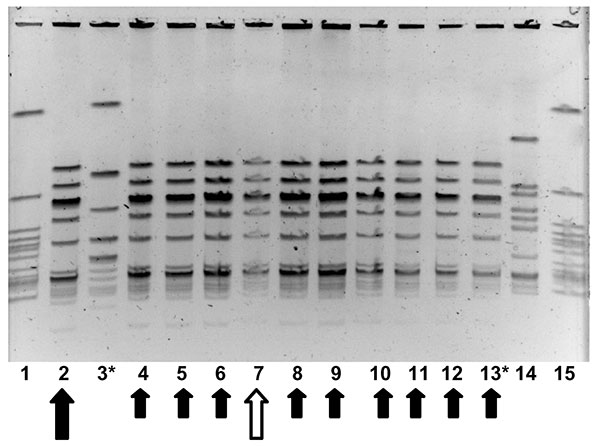Volume 9, Number 10—October 2003
Research
Mass Antibiotic Treatment for Group A Streptococcus Outbreaks in Two Long-Term Care Facilities1
Figure 1

Figure 1. Molecular epidemiology of group A streptococcus (GAS) strains in outbreak. Pulsed field gel electrophoresis, demonstrating relatedness of group A streptococcal isolates from an person with clinical illness from GAS, a person with chronic colonization with GAS, and asymptomatically colonized facility staff and residents. Lanes 1 and 15 contain an ATCC quality control strain. Lane 14 contains an isolate from another nursing facility, unrelated to outbreak 1. The isolate in lane 2 (large solid arrow) was obtained from index case-patient 2 in January 2001. The isolate in lane 7 (large hollow arrow) was obtained from a person with chronic GAS colonization (resident A) in May 2001. Small solid arrows denote electrophoretically identical GAS strains from other persons with asymptomatic colonization with group A streptococcus in May 2001. Asterisk denotes staff member.
1Presented in part at the 12th Annual Scientific Meeting of the Society for Healthcare Epidemiology of America (SHEA), April 6–9, 2002, Salt Lake City, Utah.